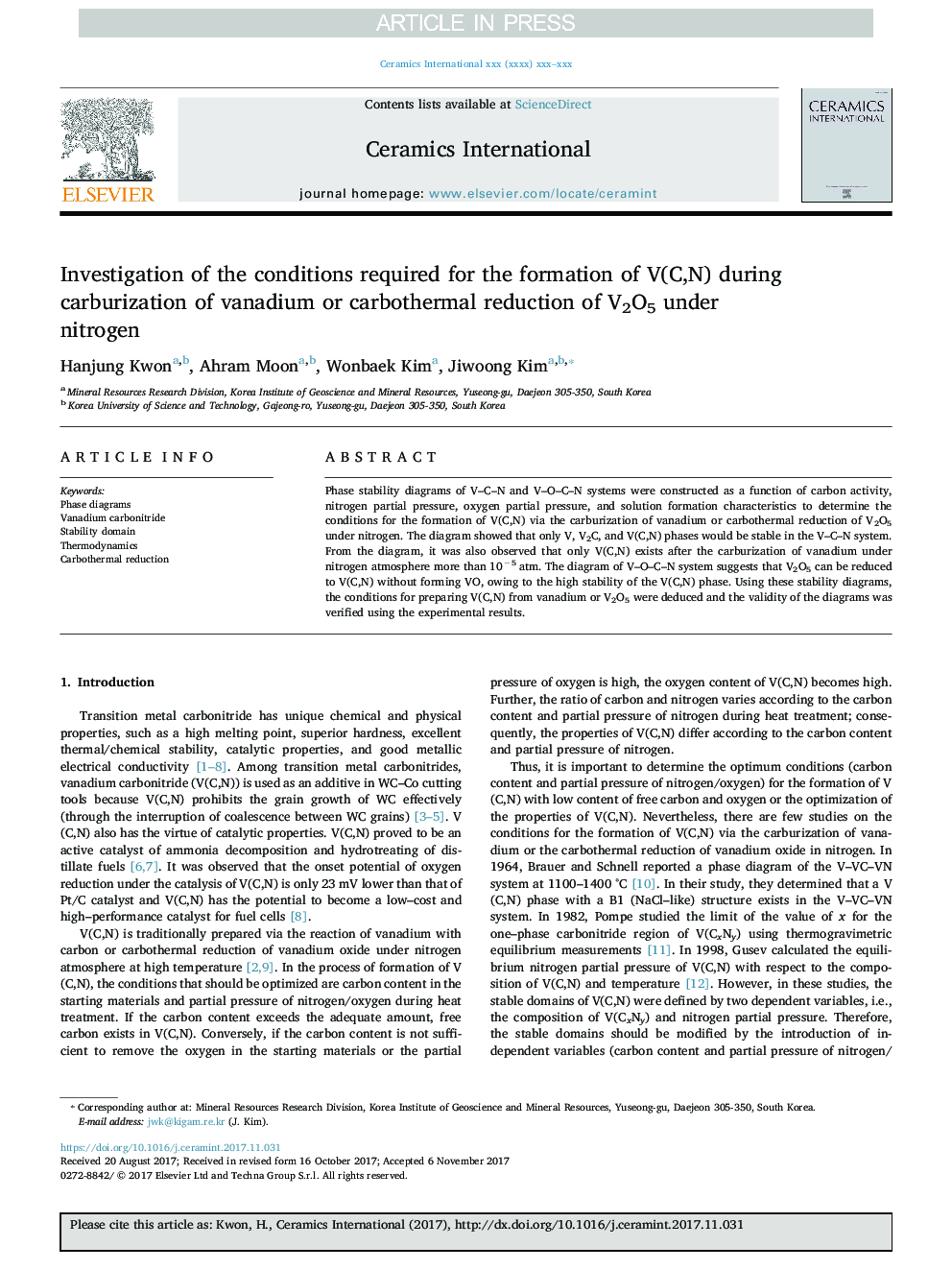| Article ID | Journal | Published Year | Pages | File Type |
|---|---|---|---|---|
| 7888555 | Ceramics International | 2018 | 9 Pages |
Abstract
Phase stability diagrams of V-C-N and V-O-C-N systems were constructed as a function of carbon activity, nitrogen partial pressure, oxygen partial pressure, and solution formation characteristics to determine the conditions for the formation of V(C,N) via the carburization of vanadium or carbothermal reduction of V2O5 under nitrogen. The diagram showed that only V, V2C, and V(C,N) phases would be stable in the V-C-N system. From the diagram, it was also observed that only V(C,N) exists after the carburization of vanadium under nitrogen atmosphere more than 10â5Â atm. The diagram of V-O-C-N system suggests that V2O5 can be reduced to V(C,N) without forming VO, owing to the high stability of the V(C,N) phase. Using these stability diagrams, the conditions for preparing V(C,N) from vanadium or V2O5 were deduced and the validity of the diagrams was verified using the experimental results.
Related Topics
Physical Sciences and Engineering
Materials Science
Ceramics and Composites
Authors
Hanjung Kwon, Ahram Moon, Wonbaek Kim, Jiwoong Kim,
